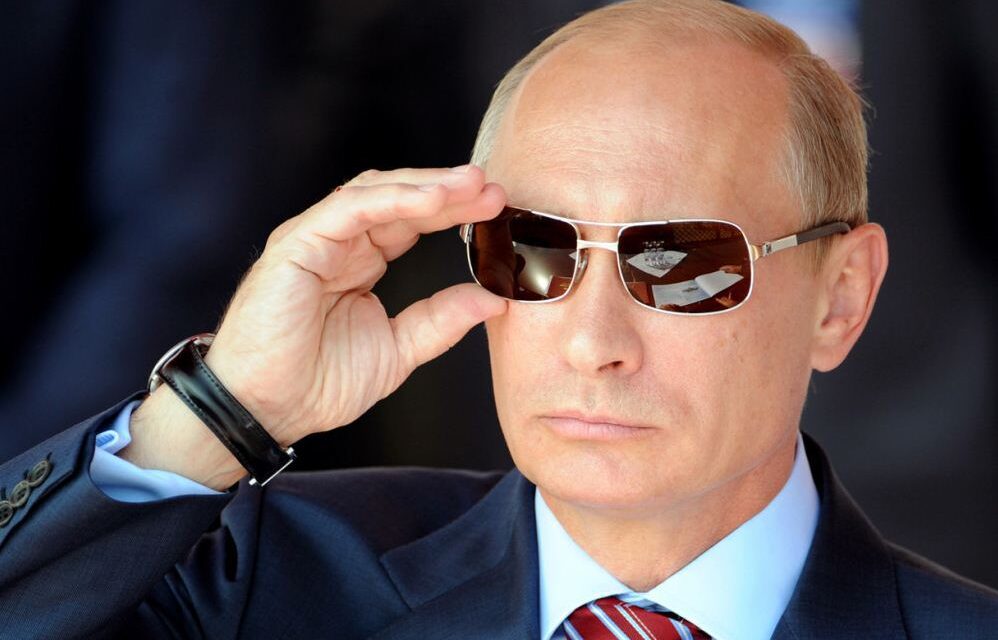
By Danny R. Johnson – Washington, DC Correspondent
WASHINGTON, D.C.–As the world watches in horror at the decimation of Ukraine by Russian President Vladimir Putin’s artillery and military might, we are once again being confronted with the real possibility that Putin is prepared to use chemical weapons against the Ukraine resistance movement.
The poignant question is what the West and North Atlantic Treaty Organization (NATO) allies will do when Putin orders. In a news briefing last week, President Joe Biden stated that when asked by a reporter what will happen if Putin uses chemical weapons in Ukraine, Biden responded, “Putin will suffer severe consequences.”
The last time a United States president was confronted with a “red line” of chemical weapons being used on civilians …the result did not turn out so well for the United States. The so-called “red line” episode in September 2013, when President Barack Obama called off U.S. airstrikes in Syria, has continued to shape his legacy. Instead of striking the Syrian government in retaliation for a nerve gas attack near Damascus, Obama took Putin up on an offer to peacefully dismantle the Syrian chemical weapons program and craft a United Nations (UN) resolution to make sure no gas attacks ever occurred in Syria again.
Alternately described as one of the former president’s most significant successes or as one of his worst failures, what remains of Obama’s red line deal turned out to be a farce. After a United Nations appointed panel determined that Syrian President Bashar Al-Assad’s forces were still using poison gas, albeit, at a much more limited scale than before, Putin refused to abide by the September 2013 deal, which promised joint U.S.-Russian efforts in the UN to punish all violators.
As Biden takes the reins in leading the NATO’s response to Putin’s invasion of Ukraine, he will have to decide whether to pursue Western efforts to hold Putin accountable and force him to pay a heavy price for using chemical weapons if they are to be employed, at the risk of widening the military conflict; or whether he should let Putin have his way and try to extract the United States from its entanglements in Ukraine. His choices, and Putin’s, will have significant consequences for Ukraine and NATO-American relations and global norms against the use of chemical weapons.
Ukraine is not part of Russia. The Ukrainians demonstrate that reality every day that they offer courageous resistance to the Russian invasion. Still, a superior historical and moral position is irrelevant if it doesn’t convince the man who has his finger on the nuclear button.
Russian-military doctrine and capabilities are directly relevant to American domestic debate. Although Americans are overwhelmingly united in opposition to Russia’s aggression in Ukraine, there’s a division between those who want to make sure that American forces do not engage Russians and those who are willing to risk direct military engagement. Last week, a group of 27 “foreign policy heavyweights” published an open letter calling for a “limited no-fly zone” over Ukraine, “starting with protection for humanitarian corridors.” In a Reuters/Ipsos poll conducted late last week, a startling 74 percent of Americans supported a no-fly zone over Ukraine. However, it’s questionable whether respondents understood that imposing a no-fly zone would require direct military confrontation with Russian forces and that direct military intervention—even a limited intervention—increases the possibility of a nuclear strike.
Those who support American military intervention in Ukraine essentially ask that NATO call Russia’s bluff. They don’t believe that Putin would nuke American forces in the field. And perhaps they’re right. Would he risk Moscow and St. Petersburg to preserve his hold on Kyiv? We don’t know.
But I’m afraid this argument insufficiently addresses the logic of tactical nuclear warfare. If he deploys tactical nuclear weapons, Putin would be calling our bluff. Given our limited tactical nuclear arsenal, would we escalate to the use of strategic weapons in response? Would we risk Washington and New York to dislodge Putin from Ukraine?
Given Putin’s expansive tactical nuclear arsenal—and given the very lively debate over his willingness to deploy that arsenal to block NATO intervention and (theoretically) force an end to the war before a truly apocalyptic escalation—the Biden administration’s strategic choices since the invasion make a great deal of sense.
The administration is trying to walk a difficult path: providing Ukraine with enough military aid (and punishing Russia with sufficiently severe economic sanctions) to affect the battlefield and degrade Russia’s ability to wage a prolonged war without crossing the red lines that could trigger a dramatic Russian response. Walking that path is even more difficult because we don’t know precisely where those red lines are. Putin himself may not have even fixed the lines yet in his mind.
Since the dawn of modern warfare, the world’s most powerful countries have inflicted terrible destruction on the nations they conquer. But nuclear weapons raise the stakes higher still. It’s vitally important that Americans understand Putin’s forces’ true nature and the doctrines that might dictate their use.
It’s one thing to confront a potential nuclear conflict when both sides know they’ll lose. Mutually assured destruction kept the peace even during the darkest days of the Cold War. It’s entirely different to confront a potential nuclear conflict when one side believes it can win. That’s the most dangerous confrontation of all, and we may be close to that now.




